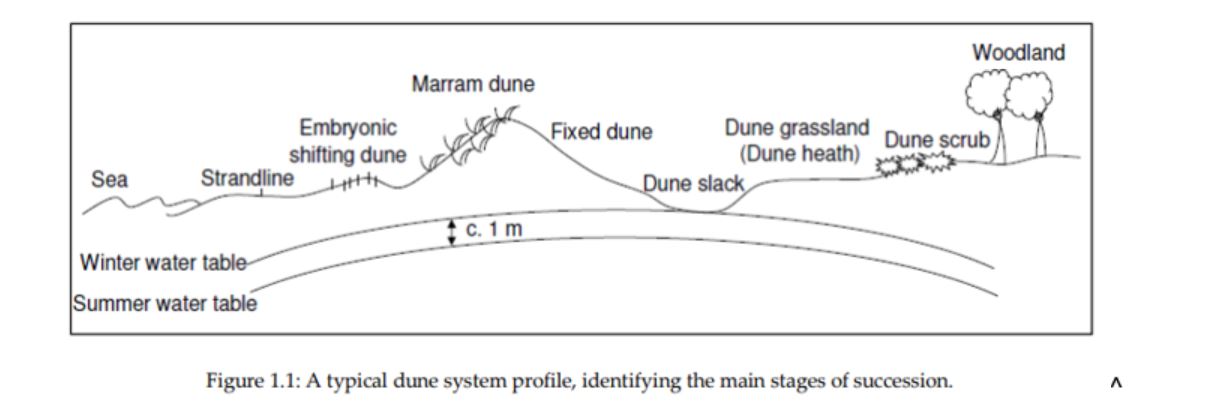Coastland Habitat: Sand Dunes
Ireland’s sand dune systems have been developing for around 5,000 years. Their sand originates from glacial deposits which over time has been shaped by the tide and wind to create dunes. During this cyclical process, sand is transferred between dunes, adjoining beaches and offshore sandbanks. Resulting in dynamic landforms that are continually changing through erosion and accretion. In recent times erosion has accelerated due to factors relating to climate change i.e., increased storm force and rising sea levels.
From a human perspective, dunes offer natural protection against high seas and storms. However, erosion can cause sand to blow inland and flooding if the dune area is breached. Therefore, it is important to be aware of their fragility and constantly changing state when developing near them
Dunes Erosion – Human Influences
Our interaction with coastal dunes is also exacerbating erosion, one major issue is the removal of sand from beaches. Coastal sand is for the most part a finite resource. Its depletion impedes on the further development of dunes and nourishment of our beaches.
Other activities putting dune systems at risk are over-grazing, trampling, hard engineering and fires.
If you would like further advice on how to protect a dune system in your region, please email us cleancoasts@eeu.antaisce.org

Image from NPWS
Coastal Dune Habitats
A well-established dunes system should consist of the following habitats:
Embryonic Dunes are the early stages of dune development. They are formed when sand and germinating plant seeds accumulate on drift debris along and above the hightide line.
Marram Dunes are located behind embryonic dunes and are rarely ever submerged. The name marram dune comes from the presence of marram grass. This grass plays an important role in the development of dunes systems. It anchors sand through its deep-rooted network, whilst also trapping sand above, adding height to the dunes. Marram grass also acts as a shelter to areas behind it, allowing other plants to colonise and take hold, forming Fixed Dunes.
Fixed Dunes are more stable than marram dunes. The presence of mosses and lichens give good ground coverage helping stabilise them, which in turn allows other plants and wildlife to take hold.
Dune Scrub and Woodland occur when larger scrub and woodland species replace herbaceous plants. This type of habitat is not very common in Ireland due to agricultural practices and amenity development.
Dune Grassland occurs when dunes are grazed.
Dune Slack can be found in the hollows and blowouts of dune systems. These areas are waterfilled due to their proximity to groundwater level, however, they may dry up during the summer. They are very diverse and nutrient-rich habitats.
Dunes Species Guide
Click on the highlighted species below to find out more.
| Dune Habitat | Species |
| Embryonic Dune | Sea Rocket/ Lyme Grass |
| Marram Dunes: | Marram grass/ Sea Holly/ Sandwich Tern
|
| Fixed Dunes: | Pyramidal Orchids/ Grayling Butterfly/ Common Lizard/ Ringed Plover
Bell Heather/ Wild thyme |
| Dune Scrub and Woodland | Gorse (Ulex spp.), Hawthorn (Crataegus monogyna), Blackthorn (Prunus spinosa)Sea-buckthorn (Hippophae rhamnoides) |
| Dune Slack | Creeping Willow (Salix repens), Creeping Bent (Agrostis stolonifera), Common Reed (Phragmites australis), sedges (Carex spp.), Rushes (Juncus effusus, J. maritimus) Silverweed (Potentilla anserina) Bog Pimpernel (Anagallis tenella). Orchids -Dactylorhiza incarnata, Gymnadenia conopsea and Epipactis palustris ,Water Horsetail (Equisetum fluviatile) |
